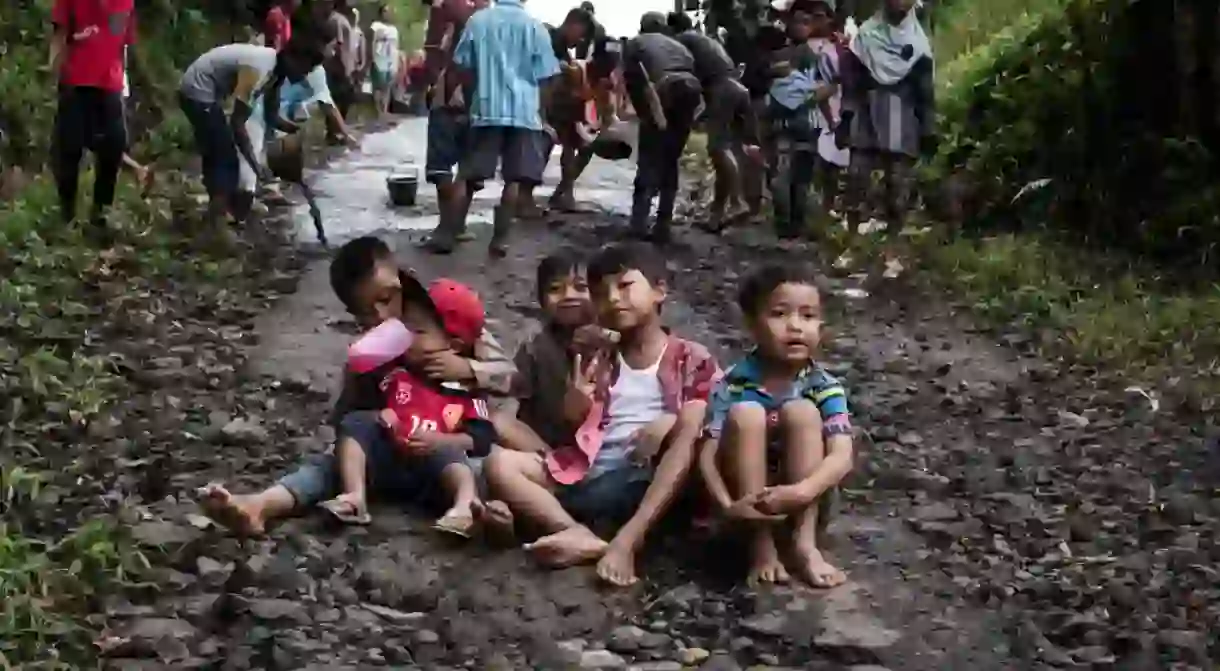Building a Road Through the Indonesian Jungle

There are far easier places to live than Glondok, a beautiful, rural, and remote village near Mount Ijen in East Java, Indonesia situated near an active volcano that is also home to a highly toxic sulfuric sea and is relatively unknown to tourists. Home to 300 rice farmers, tour guides, and sulfur miners, the small village is only accessible via difficult and dangerous roads, something the local community has decided to improve to make it easier for children to reach their schools and for commerce to reach the village.

Villagers say that they were long ago promised improvements for their town’s main road but that these words were never followed up with actions. The road presents dangerous conditions after being damaged by constant use and the region’s rainy season. On a Sunday, a day when villagers usually gather to do community work, they meet at the road to, quite literally, take matters into their own hands.

Almost the whole village is present to help reconstruct the road. Men, women, and children gather, eager to finish the work in one day. The road will greatly improve the village’s quality of life—tourists will be transported more quickly and with less effort than before, pupils will be able to reach their schools safely, and goods will be transported with more ease.

The villagers don’t possess any heavy machinery and work with the simplest tools while improvising. Most of them show up in their flip-flops, which quickly disappear in the mud near the construction site. Heavy rain has left the ground very slippery and difficult to work with. As one of the first tasks, farmers with pickaxes expand the drainage on the edges of the road which will ideally lead the water away.

A mixture of cement is prepared at one end of the road and transported by a human chain to the edge of the construction site where the workers sit, along with stones that will be used to build the foundation. The road is not being built to last, as rain and the weight of the cars will crumble the material again.

“In around six months we have to repeat the whole procedure,” says Dora, one of the villagers who works as a tour guide. Their current work is only a quick patchwork and without government help, they aren’t able to create a solid, permanent infrastructure. Around noon, water is served for every worker and everyone takes a short break before the last part of the long road is finally finished.

Most of the road is still in poor condition, but the steepest segment is now usable and is a testament to the independence and hard work of this small community.













